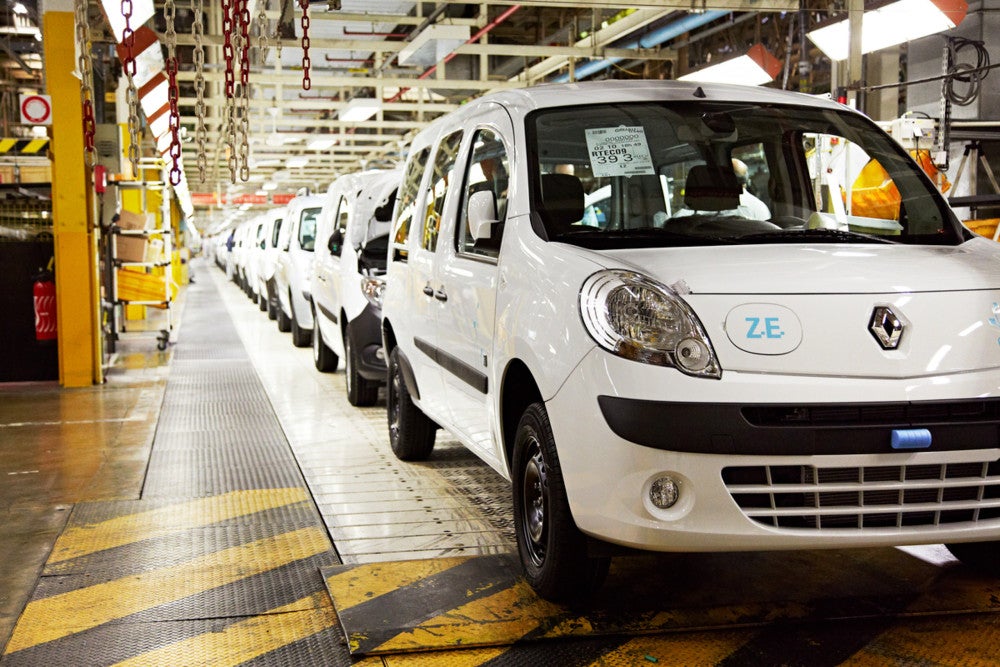
Renault‘s Maubeuge plant in France has cleared the 4 million Kangoo volume milestone.
It’s quite a story for the low-key small utilitarian ‘window van’ that meets both private motorist (small MPV) and commercial vehicle market (light duty van) needs at relatively low cost.
Kangoo’s story began in the 1990s when Renault decided to start manufacturing it in Maubeuge and invested over €500 million to upgrade the plant. The first big step came in 1994 when a 5,400-tonne transfer press – one of the largest in Europe – was set up to stamp the vehicle’s tailgate, floor, flanks and other parts.
Workstation ergonomics were also improved with the first ever variable-height production lines.
Production of model X76 (Kangoo’s industrial codename) started in 1997 at the Maubeuge plant.
There were two versions: Kangoo for private customers and Kangoo Express for shopkeepers, tradespeople and companies operating fleets, including bespoke adaptations.
How well do you really know your competitors?
Access the most comprehensive Company Profiles on the market, powered by GlobalData. Save hours of research. Gain competitive edge.

Thank you!
Your download email will arrive shortly
Not ready to buy yet? Download a free sample
We are confident about the unique quality of our Company Profiles. However, we want you to make the most beneficial decision for your business, so we offer a free sample that you can download by submitting the below form
By GlobalDataRenault points out that rivals started adding a sliding door to their vans.
Maubeuge adapted its production line and added a second robot island to attach the sheet-metal sliding side door and adding new stamping ranges. Then came a 4×4 version, and the Pampa and other limited editions. Maubeuge made its millionth Kangoo in 2002, and its two-millionth five years later, in 2007.
2008: the second Kangoo generation
Kangoo 2, which took over the following year, brought better road handling, a choice of three lengths and, included a bench that folds down flat as well as a roof rack that “turns into roof bars in seconds”. Renault says the plant’s productivity and quest for outstanding quality also made it Renault’s top choice for the electric version.
Renault started making the electric version at Maubeuge in 2011 with Kangoo Z.E. (for “zero-emission”). Since then, Maubeuge has made 90,000 of them. Since 2021 the batteries have been assembled at the same plant, in a building outfitted specifically to feed the main line. Operators have also been extensively trained in the new requirements associated with electric vehicle production. To seamlessly merge the battery flow into the assembly flow, production lines were also altered and solidified, for example by automating the battery placing system.
Third generation: substantial investment
The next milestone at Maubeuge, after the Kangoo 2 makeover in 2013, was the third Kangoo generation, which it started producing in 2021. Renault invested over €450 million to overhaul the plant, equipping it with a High Speed XXL stamping press (delivering 6,600 tonnes of pressure through five units and up to 15,000 strokes a day) and more than 600 metalworking robots. It also rearranged the industrial process to fit Kangoo’s new design – especially the van version with the ‘Open Sesame’ sliding side door.
The logistics flows were also reshuffled to accommodate the new Kangoo versions: the plant assembles more than 380 versions on a single production line, handling about 3,700 product references on an average day.
That ‘Kangoo’ name…
Why is Kangoo called that? The short answer is kangaroos. Renault says the name conjures up visions of agility, energy, rhythm and nature, a “friendly feel and the notion of practicality (think belly pouches!)”. Renault says the message is that “it’s a handy vehicle and always ready to hit the road when you’re in the mood for time out with your family or friends. It’s eminently functional and its style is distinctly cool. So the name fits quite nicely, doesn’t it?” Yes, it certainly does.







